Toyota may be one of the top-selling brands in the U.S. but the original bZ4X, its first serious foray into the battery-electric vehicle market, didn’t do much to charge up U.S. EV buyers. The good news is that Toyota appears to have learned from its mistakes. A mid-cycle update addresses the most notable buyer concerns, adding more range, better performance – and a shorter name. Headlight.News had an opportunity to test drive the new 2026 Toyota bZ and here’s what we learned.
While Toyota may be one of the best-selling brands in the U.S. market, it’s RAV4 tops in the compact SUV segment and third overall, behind only the Ford F-Series and Chevrolet Silverado. Its hybrids dominate that market segment, as well. But when it comes to battery-electric vehicles? Toyota is an also-ran. And that’s something it’s determined to address.
During a three-day media gathering at its Plano, Texas headquarters this week, Toyota announced plans to bring out a number of new EVs, both wearing the Toyota and Lexus badges, The automaker also gave some of us attending the event the chance to drive the updated version of the bZ4X to see what it’s done to address the EV’s original shortfalls.
Among the most serious shortfalls: the original mode didn’t deliver competitive power or range. The 2026 model makes significant improvements in both categories. Depending upon the trim package, it gets as much as 50% more muscle and range up to 314 miles. Toyota has also addressed another buyer complaint: the EV’s awkward name. I spent time in Texas driving the newly updated and renamed 2026 Toyota bZ. Here’s what I discovered.
An EV by any other name
Let me get the revised name out of the way first.
Like so many other manufacturers, Toyota initially chose to go with a unique nomenclature for its all-electric models, th original name was shorthand for the maker’s “Beyond Zero,” green-car strategy, the “4” referring to its size class and the “X” indicating it was available with an optional all-wheel-drive package.
For 2026, it becomes simply bZ and, as Headlight.News earlier this week reported, future all-electric models will start rolling out with more conventional names – likely borrowed from existing product lines like RAV4 or Grand Highlander.
This shift in strategy echoes what a number of competitors are planning. Volkswagen is walking away from the “ID” badge, returning to names such as Polo and Golf. Mercedes-Benz is abandoning the EQS badge, as well.
Powertrain
The other big update for the 2026 Toyota bZ impacts the EV’s powertrain. – and this is something potential buyers really should appreciate.
The 2026 Toyota bZ will be offered with two battery pack choices:
- A 57.7 kWh option delivering up to a 288-miles per charge, and
- A 74.7 kWh alternative delivering an EPA-estimated 314 miles.
As for the drivetrain itself, there’ll be both front- and all-wheel-drive options. By adopting new silicon carbide semiconductors and other updates, Toyota’s eAxles now can deliver significantly higher power.
bZ gets a more than 50% increase in power, the all-wheel-drive option making 338 horsepower which, said Toyota, will get you from 0-60 in just under 5 seconds.
The single-motor FWD package jumps from 201 to 221 horsepower. The AWD package, now rated at a combined 338 hp, is up about 50%, and it can launch from 0 to 60 in just under 5 seconds, finally bringing it into competitive range for the segment.
More Toyota News
- Toyota Goes into Wait-and-See Mode
- First Look: 2026 Toyota RAV4
- Toyota Has a Dozen New Models Coming This Year
Charging
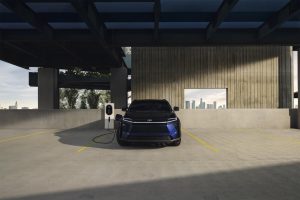
Not only does the 2026 Toyota bZ charge faster but it now can plug into the Tesla Supercharger network.
Toyota claims the larger pack will be able to go from a 10 to 80% state-of-charge in as little as 30 minutes with a fast-enough public DC quick charger.
What’s significant here is that charging not only gets quicker but a lot easier, especially if you’re on the go and can’t get back to home or office, where many EV owners now have slower Level 2 chargers.
For 2026, all Toyota EVs solid in the U.S., including bZ, migrate to the North American Charging System, or NACS, port. That means they’ll be able to plug into about two-thirds of the vast network of Tesla Superchargers.
Toyota didn’t make any measurable improvements to the electrical architecture; it’s still a 400-volt system. Instead, it’s introduced a function designed to precondition the battery pack — automatically warming – or cooling it – for optimum charging.
As Headlight.New previously reported, the bZ also gets Plug & Charge capability, an industry protocol that allows automatic identification, authentication and authorization at selected charging networks, reducing the need for multiple mobile charging applications.
Driving impressions
With the hot Texas sun beating down, my drive partner and I jumped into a high-trim, AWD version of the 2026 bZ and immediately squealed the tires pulling out of Toyota’s suburban Dallas headquarters. We didn’t have a lot of time to gather our impressions – but we still had a chance to get a good feel for the new EV.
There’s no question: Toyota has finally made good use of the instant-torque capabilities of electric drive. Light after light, we readily blew off the line faster than even the Mustang GT that tried to menace us at one intersection. Acceleration proved completely linear, with no need to rev up, as is the reality with an internal combustion engine.
Another feature I quickly came to appreciate was bZ’s revised steering. It’s no longer numb, overboosted and disconnected from the pavement. If anything, some buyers might find it a little stiff, but it offered much more road feel and was entirely predictable entering into corners.
On the other hand…
This isn’t to say Toyota has hit it out of the park, to use a hackneyed cliché. The 2026 bZ has a few faults that I hope the automaker will address.
To start with, the suspension proved surprisingly harsh, passing through to the passenger compartment even some minor flaws in the Texas pavement. The EV handled just fine. With its battery pack and motors mounted close to the ground, the crossover took good advantage of its low center of gravity. But the ride was, nonetheless, a lot more jarring than I’d have expected.
The other flaw: a lack of One-Pedal functionality. This is a feature becoming increasingly common in the latest EVs and, for those unfamiliar with the concept, can feel like you’ve downshifted a gas vehicle several gears. With One-Pedal, you can speed or slow down – even come to a complete stop — simply by modulating the throttle, thanks to an EV’s regenerative brakes. For 2026, Toyota allows you to amp up its regen braking using steering wheel-mounted paddle shifters. But it simply hasn’t gone far enough.
The program’s chief engineer told me Toyota thinks One-Pedal might be a bit distracting. But internal corporate research now has shown that isn’t the case – and that motorists really like the feature. Another senior official told me – on deep background – he expects to see Toyota start adopting One-Pedal over the next couple years.
Design
As is the norm with mid-cycle updates, Toyota has focused on what buyers have most asked for in the updated 2026 bZ4X. That translates into an exterior design virtually unchanged for the upcoming model year.
There are minor details that dedicated Toyota fans might spot, such as the revised “hammerhead” fascia, new headlights, gloss black wheel arches across the line, and new 20-inch wheels.
Inside, there’s a new 14-inch touchscreen, and Toyota clearly did listen to those who’ve complained about the original model’s dependence on touch controls. There are new temperature dials and a real knob, rather than pushbuttons, for the volume control.
Technology
The updated bZ should please family buyers with its updated version of the Toyota Safety Sense 3.0 suite of advanced driver assistance technologies such as
- Front and rear automatic emergency braking
- Side cross-traffic alert
- Lane departure warning and lane keep assist
- Blind-spot monitoring
High-trim models get additional features like Traffic Jam Assist and a surround-view monitor.
The larger infotainment screen makes it even easier to use standard wireless Apple CarPlay and Android Auto. The reworked center console now has two wireless smartphone chargers and there are plenty of USB plugs throughout the vehicle.
A 6-speaker audio system comes standard, Limited models can be ordered with a 9-speaker JBL package – though the subwoofer swallows up nearly 2 cubic feet of cargo space.
The final word
It’s not like Toyota to miss the mark as widely as it did with the original bZ4X. But the automaker has done a good job of quickly fixing some of the most significant shortfalls with the 2026 refresh.
This should position the newly renamed 2026 Toyota bZ as a more viable offering in the growing line-up of compact battery-electric vehicles.
No, it’s not a game-changing entry. There are more stylish models, ones that are quicker, others that add more impressive technology. But the overall package is solid and there is that Toyota reputation for quality, reliability and dependability that should play in the updated bZ’s favor.
For those who want a bit more rugged EV, meanwhile, keep an eye out for the new bZ Woodland that will join the line-up later this year. Among other things, it will offer more cargo space, higher ground clearance and all-terrain tires.
Look for the main bZ package to reach showrooms by autumn. Pricing has yet to be locked down, in part, as Toyota struggles to figure out the impact of the new Trump tariffs on imported autos and auto parts.


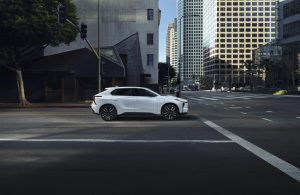
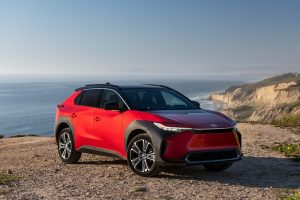
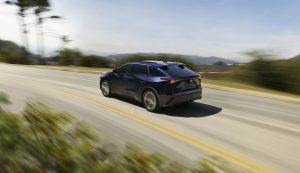
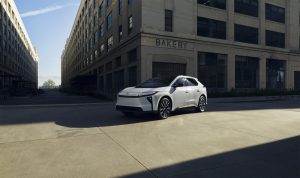
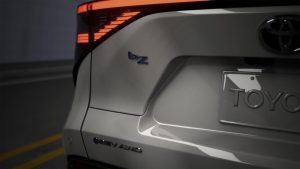

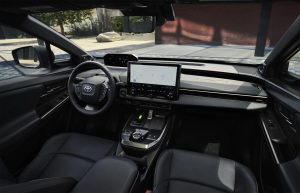
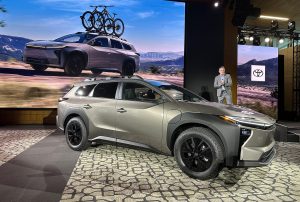
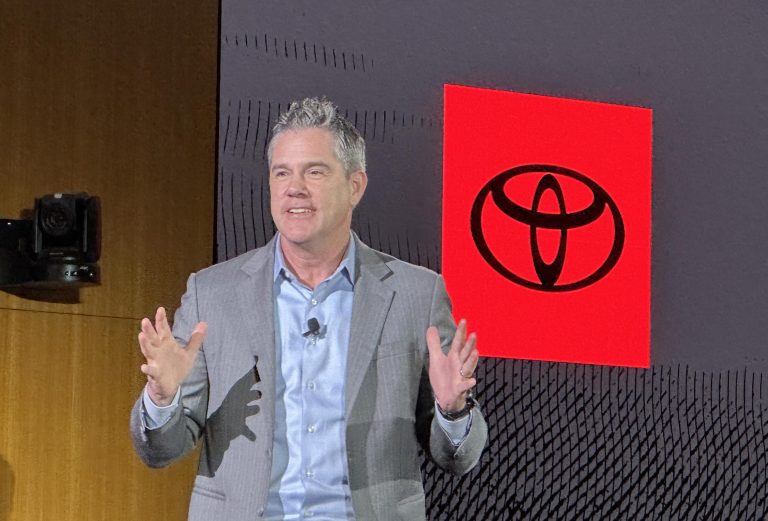
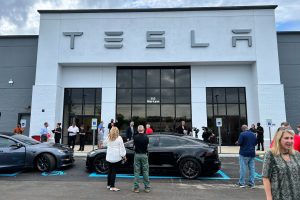
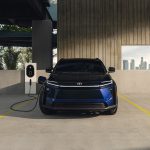
0 Comments